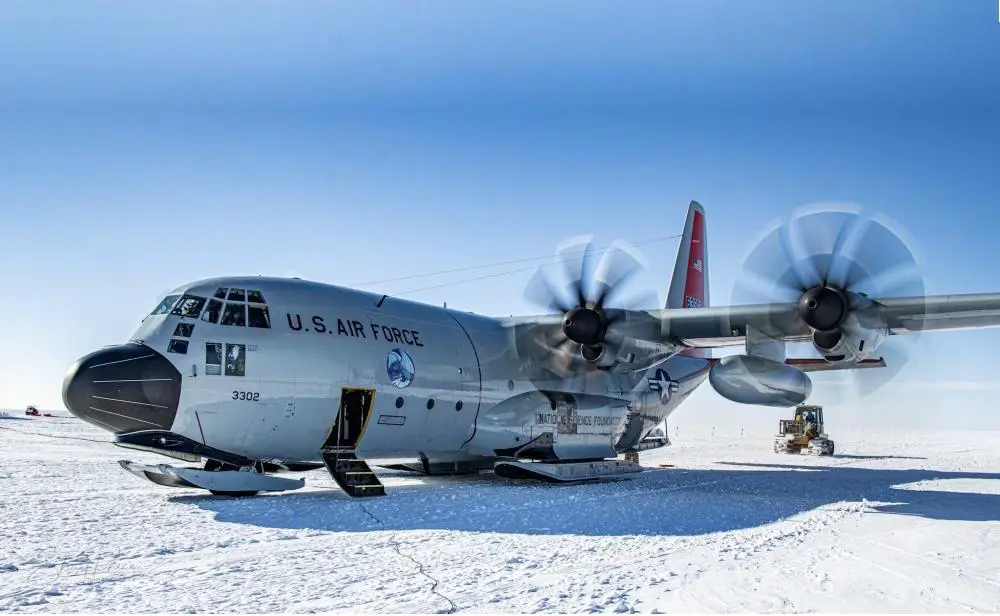The New York Air National Guard’s 109th Airlift Wing launched the first of five LC-130 “Skibird” aircraft to Antarctica Oct. 19 to support National Science Foundation research. Throughout the four-month support season, 420 Airmen will deploy for the mission. The LC-130 version of the C-130 Hercules is the largest aircraft in the world able to land on snow and ice on skis. The aircraft are equipped with eight-bladed propellers for the turboprop engines to provide additional power. The Airmen will operate out of the National Science Foundation’s McMurdo Station, flying personnel and supplies throughout the continent from November to March.
“With a standard four-month season of operating on the Antarctic continent ahead of us, I am extremely confident in the men and women of the 109th and their ability to execute our specialized mission with the highest level of professional skill,” said Col. Christian Sander, the commander of the 109th Airlift Wing.
“This season is planned to resemble a ‘normal’ pre-COVID operating model where crews and support personnel are swapped out on a regular basis throughout the season. Some COVID mitigation precautions will be taken to minimize impacts in Antarctica,” said Maj. Shay Price, the wing’s chief of Antarctic operations.

During Operation Deep Freeze, the Navy and Air Force work together to resupply U.S. science stations in Antarctica. The 109th Airlift Wing is key in supporting climate research and other scientific activities during the Antarctic summer. The 109th’s primary mission for the 2022-2023 season will be to support science efforts at three science camps outside the McMurdo area. These are South Pole Station, Western Antarctic Ice Sheet Divide Camp, and Siple Dome Camp. The wing will also support airlift between New Zealand and Antarctica. The remote field camps serve as aviation hubs and refueling points for travel throughout the continent and scientific research in West Antarctica. The Amundsen-Scott South Pole Station is a National Science Foundation research facility at the South Pole.
During the 2021-2022 support season, 109th Airmen completed 40 missions, transporting 204 passengers and 357,926 pounds of cargo to research stations across Antarctica. The crews also flew 24 missions between bases on the continent and 16 between Christchurch, New Zealand, and Antarctica, including four medical evacuations. Deploying crews and support personnel are eager to return to a more robust airlift schedule similar to pre-pandemic deployments. The unique capabilities of the ski-equipped LC-130 aircraft make it the only one of its kind in the U.S. military able to land at the South Pole and remote interior locations in Antarctica and on the Greenland ice cap.
















